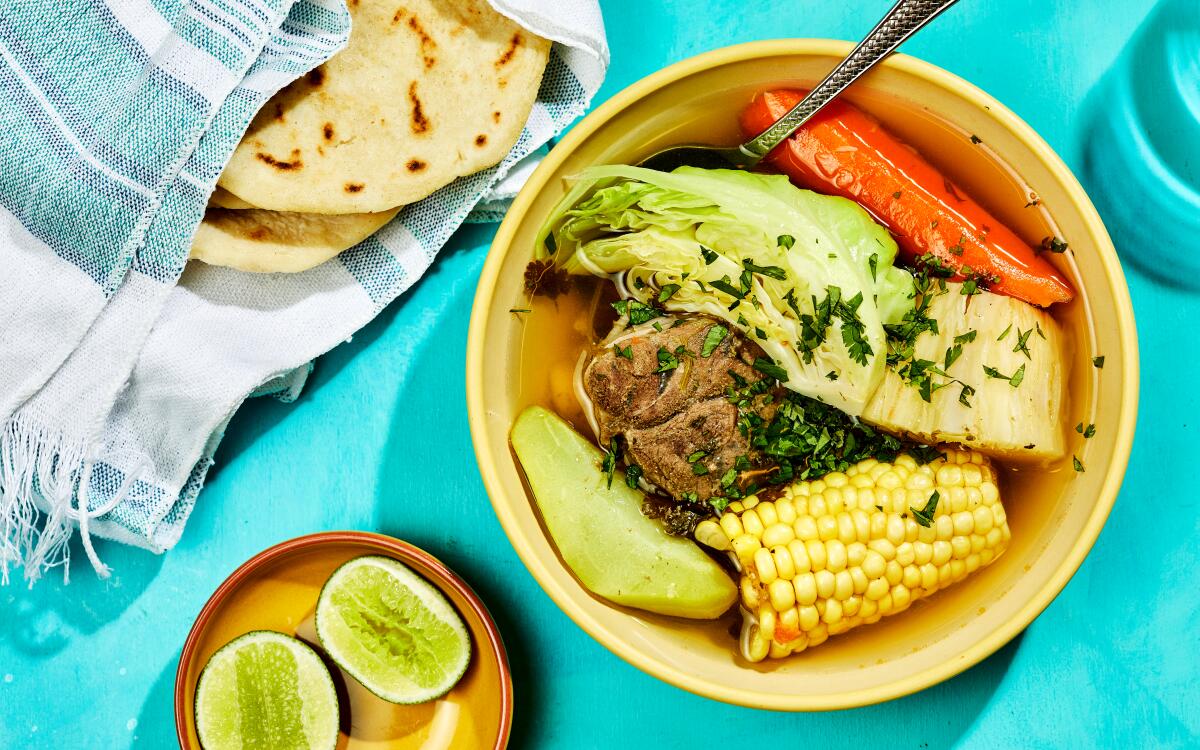Salvadoran Sopa De Res

- Share via
My mom can be at home alone and randomly get the urge to make sopa de res. By the time it’s done, without her saying a word to anyone else, the whole extended family will have somehow heard about what she is making and show up at her house for the warmth, laughs and arguments.
Sopa de res isn’t just a meal — it’s an event you don’t want to miss. For Laura Munguia, who contributed the recipe, this is also a dish she associates with her family, her childhood and a good time. To enjoy sopa de res as a child meant that she went on a family trip to the playa and, on the way back, everyone looked forward to the sopa that would replenish their strength after a fun, hot day at the beach. Her extended family often prepared this dish for everyone who visited.
So while someone’s perfect beach snack might be chips, ice cream or hot dogs, for Laura and other Salvadorans, a sopa de res at the end of the day was the cherry on top.
Some historians have suggested that the addition of potatoes or plantains to this soup is from the influence of Afro-descendants in El Salvador. This is especially true in San Miguel, the part of El Salvador with the highest concentration of Afro-descendants.
At last, after nearly 10 years, Karla Vasquez’s “The SalviSoul Cookbook” is being published by Ten Speed Press with terrific Salvadoran recipes you’ll want to make and stories of the women who shared them.
These juicy Salvadoran chicken sandwiches are stuffed with roasted, marinated chicken and fresh, crunchy vegetables and sauced with recaudo.
In a large pot over medium-high heat, combine the water, beef shank, tomato, onion, garlic, celery and cilantro and bring to a boil. Using a large spoon, skim off and discard any foam and fat that rises to the surface of the water; repeat as needed.
Turn the heat to medium, add the salt and let the meat simmer until it becomes tender, about 1 hour. Remove the meat from the broth, cover and set aside. (At this point, it’s important to know if you will be serving the soup immediately after it has finished cooking. Add the vegetables only if the soup is being served right away; otherwise, they’ll overcook sitting in the hot broth.)
Add the yuca to the pot, cover and cook until tender, 15 to 20 minutes. Add the corn, güisquiles and carrots and cook until they are tender, 5 to 10 minutes more. Next, place the cabbage quarters atop the soup and allow them to sink a bit below the surface. Cover and let simmer for 5 minutes more.
Once all the vegetables are tender, add the meat back into the soup and allow it to warm for a few minutes. Serve the soup hot with the lime wedges and plenty of fresh tortillas.
Get our Cooking newsletter.
Your roundup of inspiring recipes and kitchen tricks.
You may occasionally receive promotional content from the Los Angeles Times.











